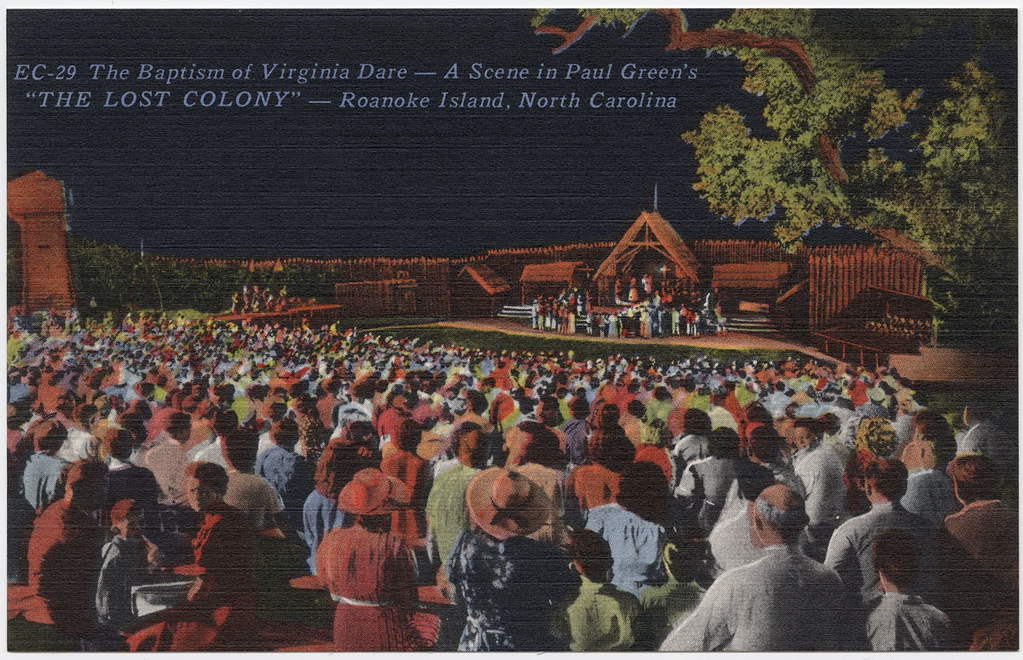The Vishnu Basement Rocks: Earth’s Ancient Foundation

At the very bottom of Grand Canyon lies the Vishnu Basement Rocks, primarily schist with granite intrusions that are about 1.7 billion years old from the Proterozoic era. This dark black Vishnu Schist first appeared almost 2 billion years ago as lava exposed to the heat and pressure of colliding volcanic islands with the North American landmass. The resulting mountain range from this ancient collision is believed to have been 5-6 miles high. These ancient rocks represent something truly mind-boggling – they’re among the oldest exposed rocks on our continent. Over the next 500 million years after formation, these towering mountains were completely eroded down until only their roots remained. Today, we can touch rocks that witnessed Earth’s earliest mountain-building episodes, long before complex life even existed.
The Great Unconformity: A Billion Years Gone Missing

There’s a staggering gap of about 1.2 billion years where 550-million-year-old strata of the Tapeats Sandstone rests directly on 1.7-billion-year-old Vishnu Basement Rocks. In some areas, more than 1 billion years’ worth of rocks have disappeared from the Grand Canyon without a trace. John Wesley Powell first noticed this massive gap during his famous 1869 expedition by boat down the Colorado River rapids. Imagine reading a history book where entire chapters covering a billion years just vanish – that’s exactly what happened here. At its smallest, this gap covers about 250 million years, but at its largest, 1.2 billion years of rock is missing. Recent research suggests that rather than there being a single global cause, there was a lot of geological activity happening within this time period, making it a coincidence that we see this gap everywhere.
Ancient Island Collisions: Building North America’s Foundation

From 1.8 to 1.6 billion years ago, at least two island arcs collided with the proto-North American continent, and this process of plate tectonics compressed and grafted the marine sediments onto the mainland and uplifted them out of the sea. Later, these rocks were buried 12 miles under the surface and pressure-cooked into metamorphic rock, forming the Granite Gorge Metamorphic Suite, which includes the Vishnu Schist and Brahma and Rama Schists that were formed 1.75 billion to 1.73 billion years ago. Think of these collisions like cosmic car crashes happening in slow motion over millions of years. The collision expanded the continent from the Wyoming-Colorado border into Mexico and almost doubled the crust’s thickness, creating the 5-to-6-mile high ancestral Mazatzal Mountains. Subsequent erosion lasting 300 million years stripped much of the exposed sediments and mountains away.
The Grand Canyon Supergroup: Life’s Early Beginnings

The Grand Canyon Supergroup of sedimentary units is composed of nine varied geologic formations that were laid down from 1.2 billion and 740 million years ago in an ancient sea. The Grand Canyon Super Group was formed from 1.25 billion years ago to 730 million years ago, and fossilized algae, the oldest remnants of life on earth, can be found in these rock layers. This sunken region of ancient North America was flooded with a shallow seaway that extended from at least present-day Lake Superior to Glacier National Park in Montana to the Grand Canyon and the Uinta Mountains. During this time, simple life forms were just beginning to experiment with multicellular existence. The oldest section, called the Unkar Group, accumulated in a variety of fluvial, deltaic, tidal, nearshore marine, and offshore marine environments. These layers preserve Earth’s earliest biological experiments that would eventually lead to the explosion of complex life.
Paleozoic Explosion: When Life Got Creative

The nearly 40 major sedimentary rock layers exposed in the Grand Canyon range in age from about 200 million to nearly 2 billion years old, with most deposited in warm, shallow seas and near ancient, long-gone sea shores in western North America. Limestones formed at the bottom of warm, shallow seas, which tells us Arizona used to be underwater, and you can find many fossils of sea creatures preserved in the rock, like trilobites, brachiopods, and crinoids. The Paleozoic Strata is comprised of sedimentary layers where multi-cellular fossils are common, with some layers made of sandstone having a reddish hue due to the fossilization of colored soil that covered the continent during that time. Arizona’s desert landscape was once a tropical ocean paradise teeming with bizarre creatures. Sandstones are compressed sand from old sand dunes or beaches, while shales are solidified mud deposited in ancient river deltas.
The Colorado River’s Recent Sculpture Work

The Colorado River started carving into the rocks of the Grand Canyon only 5-6 million years ago, and the steep-walled canyon results from our arid climate where the Colorado River cuts down faster than rain water can erode the sides. Just six million years ago, snowmelt from the Rocky Mountains began seeking a path to the ocean, and the rushing water took advantage of existing canyons as it headed west to the Pacific, ultimately becoming the Colorado River and carving the Grand Canyon. The emerging scientific consensus is that the canyon is made up of multiple segments which formed at different times – the “Hurricane” segment was formed 50-70 million years ago, the “Eastern Grand Canyon” was cut 15-25 million years ago, while the “Marble Canyon” and “Westernmost Grand Canyon” segments were carved in the last five to six million years. This means the Grand Canyon as we know it today is actually a geological mashup – like a playlist where some songs are ancient hits and others are recent releases. Otherwise, we would have a more typical wide, flat river valley instead of this dramatic chasm.
Modern Mysteries: How Glen Canyon Dam Changed Everything

Big spring floods used to carry lots of rocks and sediment, which acted like sandpaper, wearing down the river channel and side slopes, but since 1963, Glen Canyon Dam has prevented dramatic changes in water level, so the canyon is likely eroding much slower. Prior to modern flood control measures, the Colorado River provided a uniquely difficult habitat for fish, with heavy silt, frequent floods, and extreme temperatures, so only eight fish species are native to the Grand Canyon, six of which are found nowhere outside of the Colorado River. The dam essentially put the brakes on millions of years of natural sculpting. Volcanic activity dating back between 100,000 and 3 million years flowed into the Colorado River at different sites and blocked the river’s flow creating natural dams, but these dams were quickly eroded. Nonetheless, these brightly colored rocks are constantly moving and shifting around us, adding more to the story every day.
Reading Earth’s History Book: The Trail of Time

The Trail of Time is an outdoor geology exhibit and nature trail on the South Rim where each meter walked represents one million years of Grand Canyon’s geologic history, with bronze markers marking your location in time, beginning at “Today” near the Yavapai Geology Museum and ending 2 billion years later at Verkamp’s Visitor Center. Think of the red bluffs and cliffs of the Grand Canyon as Earth’s history textbook – if you scale down the canyon’s rock faces, you can jump back almost 2 billion years into the planet’s past. Grand Canyon displays more than 20 layers of rocks, and each layer is like a page in Earth’s history book. Walking this trail is like time traveling without a machine – each step literally takes you deeper into Earth’s past. Along the way are samples of the Canyon’s rocks, as you would encounter them going from the rim down to the river, and displays explaining the geologic history. The Yavapai Geology Museum includes three-dimensional models, photographs, and exhibits which allow park visitors to see and understand the complicated geologic story, housed in the historic Yavapai Observation Station built in 1928.
Thermochronology: Dating Rocks with Heat Signatures

These new research methods primarily rely on thermochronology, which uses a series of chemical analysis techniques to measure the heat stored in rock when it was formed, and this heat corresponds to the amount of pressure that geological formations were under. Scientists weren’t interested in the age of rock formation, but rather the time when rocks cooled, because deeply buried rocks are in high-pressure, high-heat conditions, but cooling indicates those rocks are being exhumed or brought closer to the surface as rocks above them disappear through erosion. The team used a dating method that exploits the radioactive decay of uranium and thorium atoms to helium atoms in a phosphate mineral known as apatite, and the helium atoms were locked in the mineral grains as they cooled and moved closer to the surface during the carving of the Grand Canyon. It’s like reading the thermal memory of rocks – each grain remembers exactly when it cooled down from its underground oven. Scientists looked at rock layers from eight locations in the Grand Canyon and found surprising variability, with western reaches cooling 200 million years earlier on average than the eastern part.
Arizona’s Underwater Past: When Deserts Were Oceans

Prior to the formation of the Vishnu mountains, Arizona and much of the Southwest did not exist. The oldest rocks in the Vishnu complex are deposits of hornblende and quartz laid down around 1.8 billion years ago as part of a deep ocean trench, and they were subsequently overlain by sediments now known as the Brahma schist, which was laid down 1.75 billion years ago. Within a few million years of the Brahma schist deposit, volcanic activity added the felsic rock of the Rama schist, and together, these layers comprise the Vishnu schist that serves as the basement of the entire Grand Canyon area. Picture Arizona as part of an alien ocean world where underwater volcanoes erupted and sediments swirled in prehistoric seas. The rocks at the bottom of the Canyon are the roots of a major mountain range, and approximately 2 billion years ago, 25,000 feet of sediments were deposited and volcanics extruded onto the ancient sea floor. No living thing except single-celled organisms had seen these mountains – eyes wouldn’t evolve for another 1,200 million years, yet in our tiny time frame, these mountains seemed everlasting before they eroded to the sea.
Recent Discoveries: 500-Million-Year-Old Rocks Get Names

In 2023, a 500 million-year-old Grand Canyon rock layer finally got a formal name – the Frenchman Mountain Dolostone. The many reliable radiometric age determinations of the Vishnu Basement Rocks were obtained using the U-Pb method on the mineral zircon, and these determinations are all highly precise, with analytical errors within ± 2 Ma. The Vishnu Schist contains zircon grains whose ages were not reset during metamorphism and can be used to determine the age of the sediment source – the oldest zircon grains are as old as 3.8 billion years, with many grains dated at about 2.4 and 1.8 billion years. Scientists are constantly discovering new details about these ancient rocks, like detectives piecing together Earth’s earliest mysteries. The dates reported for the Vishnu Basement Rocks haven’t been revised much in the past two decades, but additional research efforts are needed to further unravel their complex history. At certain sites in the Grand Canyon, more than one billion years’ worth of rocks have gone missing from the geologic record, and scientists are trying to figure out why.
The Canyon’s Continuing Evolution

Since ancient times, the Colorado River has driven the down-cutting of tributaries and retreat of cliffs, simultaneously deepening and widening the canyon. The higher elevation has resulted in greater precipitation in the Colorado River drainage area, and the uplift of the Colorado Plateau is uneven, with the Kaibab Plateau that the Grand Canyon bisects being over one thousand feet higher at the North Rim than at the South Rim. Almost all runoff from the North Rim flows toward the Grand Canyon, while much of the runoff on the plateau behind the South Rim flows away, resulting in deeper and longer tributary washes and canyons on the north side and shorter and steeper side canyons on the south side. The Grand Canyon isn’t just a static monument – it’s still actively growing and changing every single day. What is not in doubt is the way the Grand Canyon continues to inspire awe: not just in its natural beauty but also in the way it charts the geological history of our planet across billions of years. This is not the deepest canyon in the world, or even in North America, but it is one of the best places in the world to learn about geological or deep time, and to think about how our extremely brief human lives fit into Earth’s history and its future.
What stories might these ancient rocks tell if they could speak about witnessing nearly half of Earth’s entire existence?








